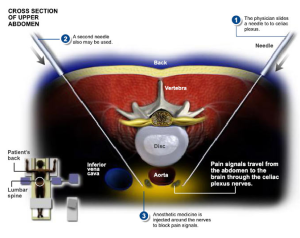Abdominal pain is one of those unfortunate symptoms that can be indicative of many different types of illnesses, disorders, and diseases. In the mildest form, it can be a result of something as simple as indigestion.
In the worst cases, it can indicate a possible tumor or obstruction. The pain can be chronic without a definitive root cause as to why the pain is occurring.
Pain in the abdomen is often more common in women than men due to the involvement of reproductive organs. What may seem like a stomach ache may last for long periods of time, recur monthly and impact daily living.
There are a variety of causes for abdominal pain and in order to effectively treat the pain, determining the cause should be the first step, although it is not always possible.
How is abdominal pain diagnosed?
The first step in identifying the source of abdominal pain is to determine the location of the pain. The stomach is located in the upper middle-to-left area of the abdomen, just below the rib cage. This is often where one might hear stomach rumblings or gurgling. Also up high under the rib cage, varying from center to the right side depending on the cause of pain, are the gallbl adder, pancreas and liver.
adder, pancreas and liver.
In the lower right quadrant of the abdomen, from the navel and down, is where the appendix is located. While acute pain from a swollen appendix is usually felt in this area, there are times where the pain may begin higher.
Also in the lower area of the abdomen, toward the left, is where one might feel colon pain. And then there is the pelvis. Pain in the pelvic area might be due to the uterus, ovaries and other reproductive organs, or the bladder and urethra. It may also be indicative of polyps or issues within the colon.
The second thing to look for is the strength and duration of the pain. Is the pain acute, such as a 9 or 10 on a pain scale of 1-10? If so, that likely is a very serious, possibly life-threatening situation and emergency medical assistance is imperative. Likely the problem is a ruptured appendix or blockage.
If the pain is milder, it’s important to stop and assess the kind of pain that’s plaguing you. Is it aching and dull? Are there sharp bursts of pain? Does the pain come and go? If so, how long in between each pang session? Is the pain a chronic pain that has lasted for days, or even weeks? The most important thing is to provide your physician with as much detail as possible so that they can narrow down the route of testing to determine a diagnosis.
The third element to identifying abdominal pain is to determine if there are any triggers. Does the pain only occur after you eat? Might the pain be muscle related, coming on just after an injury or only hurting when you move? Perhaps the pain only occurs at night, or when you’re lying down, or when you’re having a bowel movement. If the pain is not acute, keep a journal to document when the pain occurs.
Try to pinpoint the level of pain by using a 1-10 scale, and note the time. Be precise in documenting the area of pain on your abdomen, if the pain tends to move or radiate. Most importantly, pay close attention to any common themes, habits or situations that seem to coincide with the pain. This includes sleep patterns, eating habits, types of food, bowel movements, physical activity, sexual intercourse, sitting/standing positions and anything else that might bright on or worsen the pain.
What are the common causes of abdominal pain?
In women, constipation is one of the most familiar causes of pain within the stomach area. While nearly everyone gets constipated at one time or another, chronic constipation can cause pain in the stomach area.
The symptoms of pain can be debilitating and require help from a pain specialist. If there is blood in the stool or a hard and distended abdomen, immediate medical attention is required. Interestingly enough, constipation may be made worse by opiate medications.
Other conditions that cause abdominal pain are Crohn’s disease, ectopic pregnancies and reproductive issues. Gallstones and pelvic inflammatory disease may also lead to chronic and acute pain in the abdomen (Bardiau et al., J Clin Anesth, 2009).
Abdominal Pain Treatment

Celiac Plexus Block
If the pain in the belly is severe and chronic you do not have to live with it. It is important to be examined by your Arizona pain specialist and discuss options for pain relief.
Many women suffer long with chronic abdominal pain instead of seeking help. If the pain is disrupting daily activities, interrupting a natural sex life or debilitating you in any way, you should seek medical care. Also if menstrual cramps are too severe to deal with, relief is available.
Treatment options for chronic abdominal pain include:
Home care: If you do not have vomiting, fever, passing out, chest pain, vaginal bleeding, or other serious symptoms treatment at home may help considerably including acetaminophen, NSAID’s, heating pad, or antacids.
When it’s chronic or above symptoms exist, professional treatment should be sought. Due to the multitude of potential problems causing abdominal pain, a true list of exhaustive treatments may take pages. However, there are various medications for abdominal pain such as opiates which can help.
When inflammatory bowel disease is present, a GI doctor may give sulfasalazine or appropriate treatment.
Pain management doctors in Arizona can perform a celiac plexus block for abdominal pain. This treatment relieves pain from pancreatitis, upper abdominal cancers, and potentially IBD.
For help with abdominal pain, call the best pain doctors in AZ, Arizona Pain Specialists.
Call (602) 507 – 6550 to schedule your Appointment TODAY!
